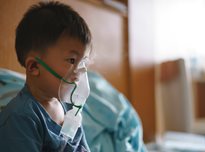Read and report vaccine reactions, harassment and failures.
Who is Most at Risk for Respiratory Syncytial Virus (RSV)?

Young infants and children are considered most at risk for developing Respiratory Syncytial Virus (RSV) infection. RSV is considered the most common cause of acute childhood respiratory illness and the leading cause of hospitalization during infancy.1 It is estimated that between four and five million children become infected with RSV in the U.S. each year, with an estimated 58,000 to 80,000 resulting in hospitalization.2
More recently, health officials have also determined that RSV can impact older adults, especially those who are frail or who have underlying health conditions.3 The CDC estimates that between 60,000 and 120,000 older adults develop RSV infection that require hospitalization, with 6,000 to 10,000 of those contributing to death.4
Individuals with underlying immune diseases, such as those with HIV infection, are also considered to be at a higher risk for developing RSV infection. 5
IMPORTANT NOTE: NVIC encourages you to become fully informed about Respiratory Syncytial Virus (RSV) and the Respiratory Syncytial Virus (RSV) vaccine by reading all sections in the Table of Contents, which contain many links and resources such as the manufacturer product information inserts, and to speak with one or more trusted health care professionals before making a vaccination decision for yourself or your child. This information is for educational purposes only and is not intended as medical advice.
References:
1 Jha A, Jarvis H, Fraser C, et al. Respiratory Syncytial Virus. In: SARS, MERS and other Viral Lung Infections. European Respiratory Society; June 1, 2016. Chapter 5. Sheffield (UK).
2 U.S. Centers for Disease Control and Prevention. RSV in Infants and Young Children. In: Respiratory Syncytial Virus Infection (RSV). Oct. 28, 2022.
3 Jha A, Jarvis H, Fraser C, et al. Respiratory Syncytial Virus. In: SARS, MERS and other Viral Lung Infections. European Respiratory Society; June 1, 2016. Chapter 5. Sheffield (UK).
4 U.S. Centers for Disease Control and Prevention. RSV in Older Adults and Adults with Chronic Medical Conditions. In: Respiratory Syncytial Virus Infection (RSV). Oct. 28, 2022.
5 Jha A, Jarvis H, Fraser C, et al. Respiratory Syncytial Virus. In: SARS, MERS and other Viral Lung Infections. European Respiratory Society; June 1, 2016. Chapter 5. Sheffield (UK).



